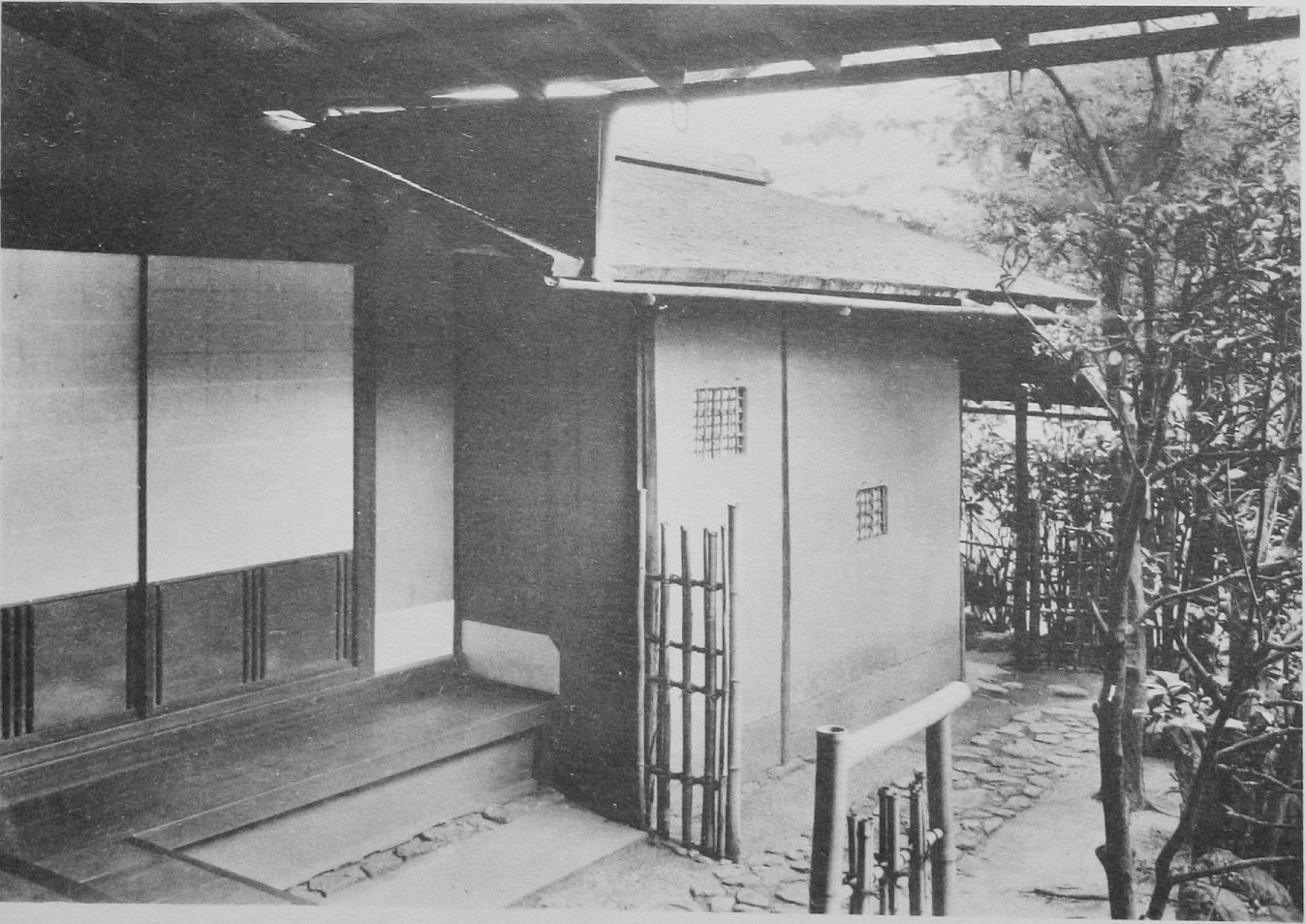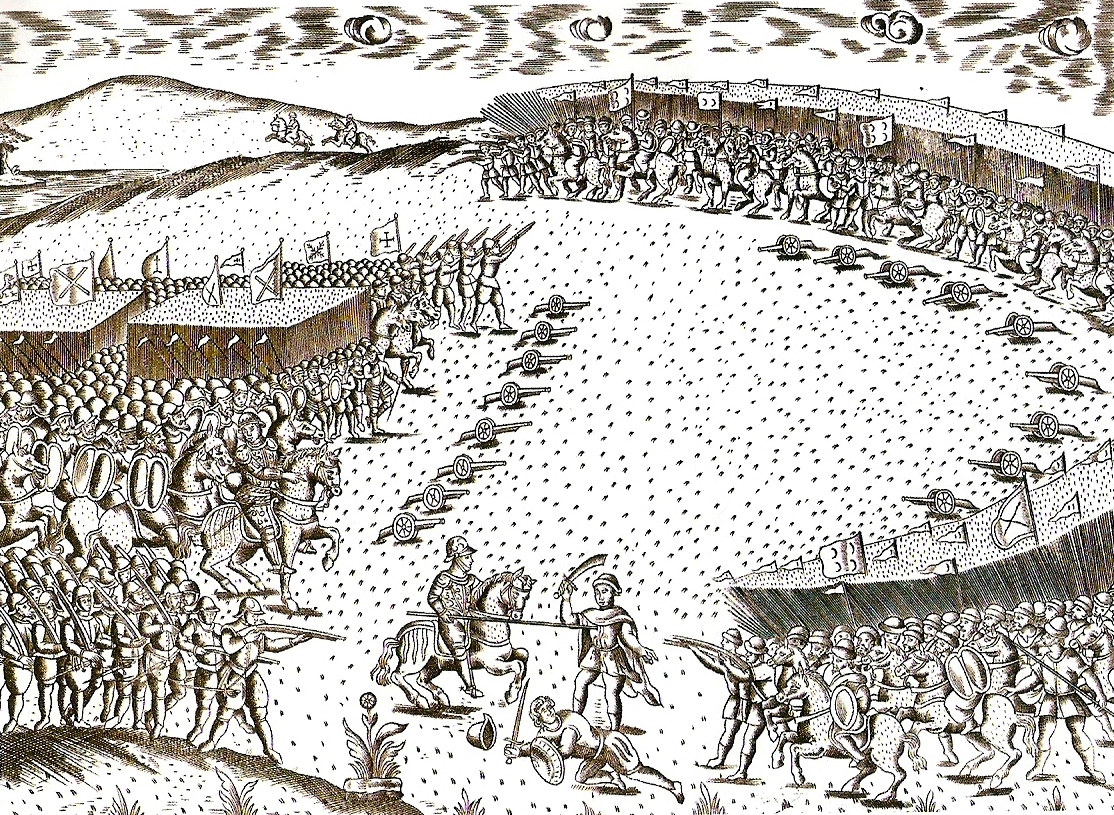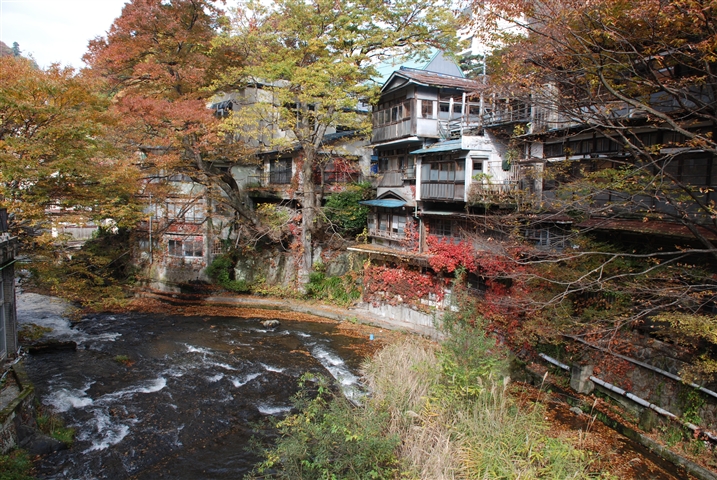|
Sen No Sōtan
(1578–1658), also known as Genpaku Sōtan 元伯宗旦, was the grandson of the famed figure in Japanese cultural history, Sen no Rikyū. He is remembered as Rikyū's third-generation successor in Kyoto through whose efforts and by whose very being, as the blood-descendant of Rikyū, the ideals and style of Japanese tea ceremony proposed by Rikyū were able to be passed forward by the family. Biography He was the son of Sen Shōan and Okame, a daughter of Rikyū, and is counted as the third generation in the three lines of the Sen family known together as the ''san-Senke'' (see Schools of Japanese tea ceremony). He helped to popularize tea in Japan. It was in the generation of his children, Sōsa, Sōshitsu and Sōshu, that the three lines of the family—the Omotesenke, Urasenke and Mushakōjisenke—were established, with these three sons, respectively, as their heads of house. They are counted as the fourth generation in the respective lines. He had the original tea hou ... [...More Info...] [...Related Items...] OR: [Wikipedia] [Google] [Baidu] |
Sen No Rikyū
, also known simply as Rikyū, is considered the historical figure with the most profound influence on ''chanoyu,'' the Japanese "Way of Tea", particularly the tradition of '' wabi-cha''. He was also the first to emphasize several key aspects of the ceremony, including rustic simplicity, directness of approach and honesty of self. Originating from the Sengoku period and the Azuchi–Momoyama period, these aspects of the tea ceremony persist. Rikyū is known by many names; for consistency, he will be referred to as Rikyū in this article. There are three ''iemoto'' (''sōke''), or 'head houses' of the Japanese Way of Tea, that are directly descended from Rikyū: the Omotesenke, Urasenke, and Mushakōjisenke, all three of which are dedicated to passing forward the teachings of their mutual family founder, Rikyū. Early life Rikyū was born in Sakai in present-day Osaka Prefecture. His father was a warehouse owner named , who later in life also used the family name Sen, and his ... [...More Info...] [...Related Items...] OR: [Wikipedia] [Google] [Baidu] |
Daitoku-ji
is a Buddhist temple, one of fourteen autonomous branches of the Rinzai school of Japanese Zen. It is located in Kita-ku, Kyoto, Japan. The "mountain name" ('' sangō'') by which it is known is . The Daitoku-ji temple complex today covers more than . History Daitoku-ji originated as a small monastery founded in 1315 or 1319 by the monk , who is known by the title ''Daitō Kokushi'' ("National Teacher of the Great Lamp") given by Emperor Go-Daigo. In 1325, the monastery was converted into a supplication hall for the imperial court at the request of the retired Emperor Hanazono. The dedication ceremony for the imperial supplication hall, with its newly added dharma hall and abbot's living quarters, was held in 1326, and this is generally recognized as the true founding of the temple.Kodansha Encyclopedia of Japan, entry "Daitokuji." Like many other temples in Kyoto during that time, the temple's buildings were destroyed by fire. In 1474, which was when Kyoto was the scene of the ... [...More Info...] [...Related Items...] OR: [Wikipedia] [Google] [Baidu] |
1578 Births
__NOTOC__ Year 1578 ( MDLXXVIII) was a common year starting on Wednesday (link will display the full calendar) of the Julian calendar. Events January–June * January 31 – Battle of Gembloux: Spanish forces under Don John of Austria and Alexander Farnese defeat the Dutch; Farnese begins to recover control of the French-speaking Southern Netherlands. * April 27 – The Duel of the Mignons claims the lives of two favorites of Henry III of France, and two favourites of Henry I, Duke of Guise. * May 26 – The ''Alteratie'' in Amsterdam ends Catholic rule, and opens Catholic worship there. * May 31 – Martin Frobisher sails from Harwich, England to Frobisher Bay, Canada, on his third expedition. * June 11 – Humphrey Gilbert is granted letters patent from the English crown to establish a colony in North America. July–December * July – Martin Frobisher holds the first Thanksgiving celebration by Europeans in North America, on ... [...More Info...] [...Related Items...] OR: [Wikipedia] [Google] [Baidu] |
Kōjien
is a single-volume Japanese dictionary first published by Iwanami Shoten in 1955. It is widely regarded as the most authoritative dictionary of Japanese, and newspaper editorials frequently cite its definitions. As of 2007, it had sold 11 million copies. Izuru Shinmura ''Kōjien'' was the magnum opus of Shinmura Izuru, 1876–1967, a professor of linguistics and Japanese at Kyoto University. He was born in Yamaguchi Prefecture and graduated from the prestigious Tokyo University, where he was a student of . After studying in Germany, Ueda taught comparative linguistics and edited foreign-language dictionaries in the latter part of the Meiji era. Through his tutelage, Shinmura became involved in Japanese language lexicography. Even ''Kōjien'' editions published after his death credit Shinmura as the chief editor. History Jien The predecessor of ''Kōjien'' originated during the Great Depression in East Asia. In 1930, the publisher Shigeo Oka (岡茂雄, ''Oka Shigeo'', 18 ... [...More Info...] [...Related Items...] OR: [Wikipedia] [Google] [Baidu] |
Daijisen
The is a general-purpose Japanese dictionary published by Shogakukan in 1995 and 1998. It was designed as an "all-in-one" dictionary for native speakers of Japanese, especially high school and university students. History Shogakukan intended for the to directly compete with Iwanami's popular desktop dictionary, which was a bestseller through three editions (1955, 1969 and 1983). The followed upon the success of two other competitors, Sanseido's ("Great forest of words", 1988, 1995, 2006) and Kōdansha's color-illustrated ("Great dictionary of Japanese", 1989, 1995). All of these dictionaries weigh around and have about 3000 pages. The 1st edition of the (1995) included over 220,000 entries and 6000 all-color illustrations and photographs. The chief editor was also chief editor of the directly-competing dictionary. Other editors included , , and . Shogakukan also released a CD-ROM version (1997) of the 1st edition. The "enlarged and revised" edition (1998) was more of ... [...More Info...] [...Related Items...] OR: [Wikipedia] [Google] [Baidu] |
Daijirin
is a comprehensive single-volume Japanese dictionary edited by , and first published by in 1988. This title is based upon two early Sanseidō dictionaries edited by Shōzaburō Kanazawa (金沢庄三郎, 1872–1967), ''Jirin'' (辞林 "Forest of words", 1907) and the revised ''Kōjirin'' (広辞林 "Wide forest of words", 1925). History Sanseido specifically created ''Daijirin'' to compete with Iwanami's profitable ''Kōjien'' dictionary, which was a longtime bestseller through three editions (1955, 1969, and 1983). Two other contemporary dictionaries directed at the ''Kōjien'' market share were Kōdansha's color-illustrated ''Nihongo Daijiten'' (日本語大辞典 "Great dictionary of Japanese", 1989) and Shōgakukan's ''Daijisen'' (大辞泉 "Great fountainhead of words", 1995, also edited by Akira Matsumura). The first edition of ''Daijirin'' (1988) had 220,000 headword entries and included encyclopedic content in numerous charts, tables, and illustrations. While ''Kōjien' ... [...More Info...] [...Related Items...] OR: [Wikipedia] [Google] [Baidu] |
Aizu Wakamatsu
is a city in Fukushima Prefecture, Japan. , the city had an estimated population of 118,159 in 50,365 households, and a population density of 310 persons per km2. The total area of the city was . Geography Aizuwakamatsu is located in the western part of Fukushima Prefecture, in the southeast part of Aizu basin. Mountains * Mount Ōtodake (1416 m) * Mount Seaburi * Mount Oda * Mount Iimori Rivers * Aga River * Nippashi River * Yugawa River * Sesenagi River Lakes * Lake Inawashiro * Lake Wakasato * Lake Higashiyama * Lake Sohara Hot springs * Higashiyama Onsen * Ashinomaki Onsen Administrative divisions There are 11 administrative divisions (hamlets or ) in the city. * Wakamatsu * Machikita * Kouya * Kouzashi * Monden * Ikki * Higashiyama * Ōto * Minato * Kitaaizu * Kawahigashi Neighboring municipalities Fukushima Prefecture *North: Kitakata, Aizubange, Yugawa, Bandai *East: Koriyama, Inawashiro *West: Aizumisato *South: Shimogo, Tenei Climate Aizuwakamatsu h ... [...More Info...] [...Related Items...] OR: [Wikipedia] [Google] [Baidu] |
Gamō Ujisato
or Gamō Yasuhide was a Japanese ''daimyō'' of the Sengoku and Azuchi–Momoyama periods. He was heir and son of Gamō Katahide, lord of Hino Castle in Ōmi Province, he later held Matsusaka (Ise Province) and finally Aizuwakamatsu Castle in Mutsu Province. He also controlled Obama Castle through one of his retainers, Gamō Chūzaemon. Early life and rise Ujisato, known in his childhood as , was born in Hino, in the Gamō district of Ōmi Province in 1556. In 1568, Oda Nobunaga, who was en route to Kyoto, defeated the Rokkaku clan,_who_were_the_masters_of_Tsuruchiyo's_father,_._Upon_the_Rokkaku_clan's_defeat,_Katahide_as_a_former_influential_vassal,_pledged_loyalty_to_Nobunaga,_and_became_an_Oda_retainer._However,_the_price_of_Katahide's_pledge_was_giving_up_his_son_as_a_hostage,_and_so_Tsuruchiyo_was_taken_to_Gifu,_Gifu.html" "title="DF 53 of 80/nowiki>">DF 53 ..., who were the masters of Tsuruchiyo's father, . Upon the Rokkaku clan's defeat, Katahide as a former influential ... [...More Info...] [...Related Items...] OR: [Wikipedia] [Google] [Baidu] |
Daimyō
were powerful Japanese magnates, feudal lords who, from the 10th century to the early Meiji era, Meiji period in the middle 19th century, ruled most of Japan from their vast, hereditary land holdings. They were subordinate to the shogun and nominally to the Emperor of Japan, emperor and the ''kuge''. In the term, means 'large', and stands for , meaning 'private land'. From the ''shugo'' of the Muromachi period through the Sengoku period, Sengoku to the ''daimyo'' of the Edo period, the rank had a long and varied history. The backgrounds of ''daimyo'' also varied considerably; while some ''daimyo'' clans, notably the Mōri clan, Mōri, Shimazu clan, Shimazu and Hosokawa clan, Hosokawa, were cadet branches of the Imperial family or were descended from the ''kuge'', other ''daimyo'' were promoted from the ranks of the samurai, notably during the Edo period. ''Daimyo'' often hired samurai to guard their land, and they paid the samurai in land or food as relatively few could aff ... [...More Info...] [...Related Items...] OR: [Wikipedia] [Google] [Baidu] |
Shunoku Sōen
Shunoku Sōen (pronounced with a hard 'n': "Shunn'oku") (春屋宗園) (1529 - 1611) was a Rinzai Zen monk of the Azuchi-Momoyama and early Edo periods and the 111th Head Priest of Daitoku-ji temple. He received the title Zen Master Rōgen Tenshin (Rōgen Tenshin Zenji 朗源天真禅師) from Emperor Ōgimachi in 1586 and the highest acclaim of National Teacher Taihō Enkan (Taihō Enkan Kokushi 大宝円鑑国師) from Emperor Go-Yōzei (1571-1617) in 1600. Sōen was born in Yamashiro Province and became a monk at an early age. He first trained under Rosetsu Yōha (dates unknown) at Kennin-ji before becoming a student of Kōin Sōken at Daitoku-ji. After Sōken's death, Sōen completed his training under Shōrei Sōkin (1505-1584) of Daisen-in and the 107th Head Priest of Daitoku-ji. Sōen became the 111th Head Priest of Daitoku-ji in 1569 (2nd year of the Eiroko Era). Time at Nanshū-ji, Sakai Sōen spent some years in Sakai at the Yōshun-an sub-temple of Nanshū-ji af ... [...More Info...] [...Related Items...] OR: [Wikipedia] [Google] [Baidu] |
Mushakōjisenke
, sometimes referred to as ''Mushanokōjisenke'', is one of the schools of Japanese tea ceremony. Along with Urasenke and Omotesenke, the Mushakōjisenke is one of the three lines of the Sen family descending from Sen no Rikyū, which together are known as the san-Senke or "three Sen houses/families" (三千家). The head or ''iemoto'' of this line carries the hereditary name Sōshu (宗守). History Mushakōjisenke is associated with Sen no Rikyū's great-grandson , who was the second to the oldest of Sen no Sōtan's four sons. Like his older brother, he was Sōtan's son by Sōtan's first wife, and through much of his life he lived apart from the Sen house. During this time, he became a lacquer artisan. At the behest of his younger brothers, however, he set up his own tea house, called the Kankyū-an, on Mushakōji street, and became devoted to practicing and teaching the Way of Tea."Senke to Kankyū-an no rekishi" iMushakōjisenke official website Accessed August 8, 2008. Ic ... [...More Info...] [...Related Items...] OR: [Wikipedia] [Google] [Baidu] |
Japan
Japan ( ja, 日本, or , and formally , ''Nihonkoku'') is an island country in East Asia. It is situated in the northwest Pacific Ocean, and is bordered on the west by the Sea of Japan, while extending from the Sea of Okhotsk in the north toward the East China Sea, Philippine Sea, and Taiwan in the south. Japan is a part of the Ring of Fire, and spans Japanese archipelago, an archipelago of List of islands of Japan, 6852 islands covering ; the five main islands are Hokkaido, Honshu (the "mainland"), Shikoku, Kyushu, and Okinawa Island, Okinawa. Tokyo is the Capital of Japan, nation's capital and largest city, followed by Yokohama, Osaka, Nagoya, Sapporo, Fukuoka, Kobe, and Kyoto. Japan is the List of countries and dependencies by population, eleventh most populous country in the world, as well as one of the List of countries and dependencies by population density, most densely populated and Urbanization by country, urbanized. About three-fourths of Geography of Japan, the c ... [...More Info...] [...Related Items...] OR: [Wikipedia] [Google] [Baidu] |





.jpg)